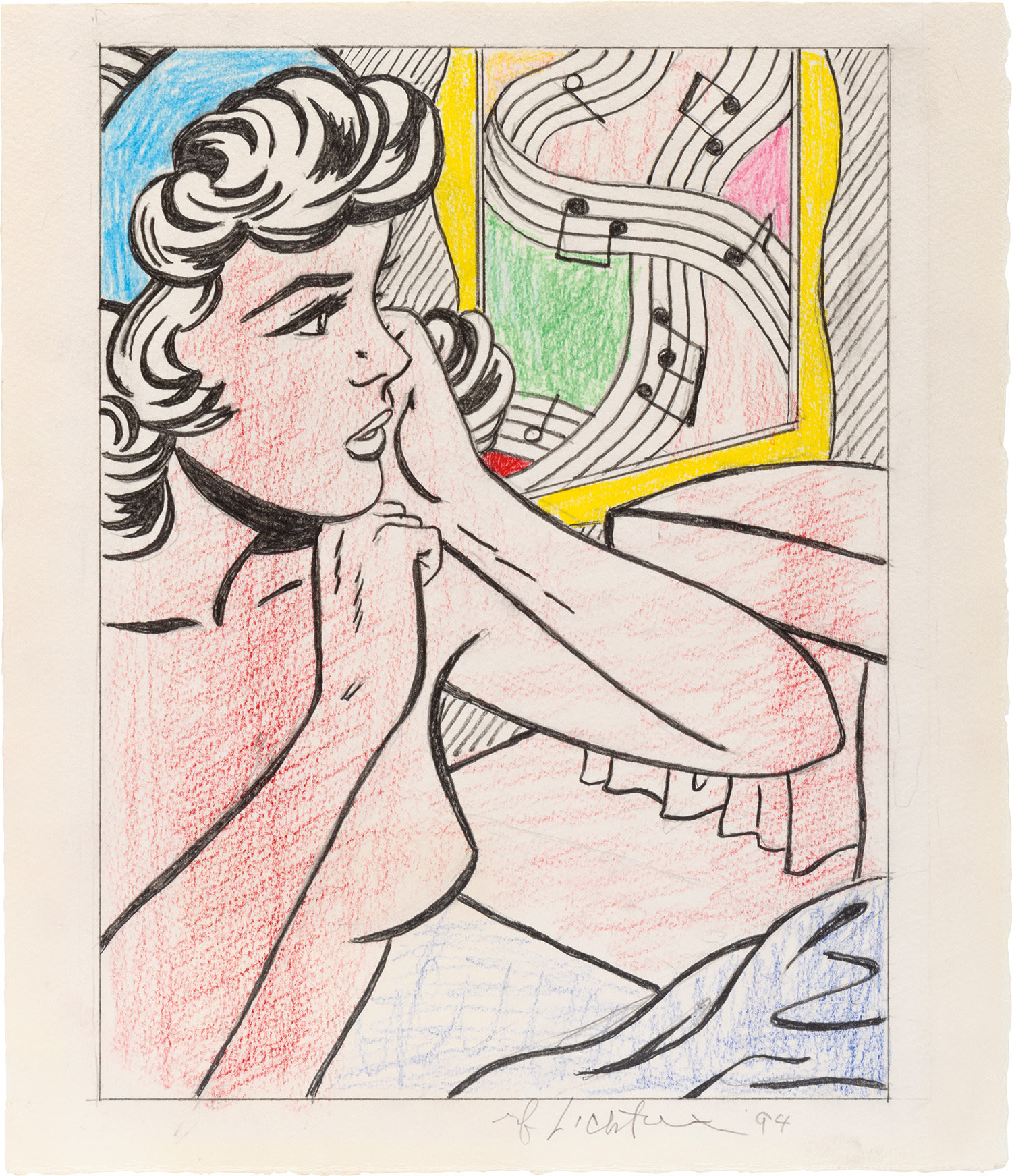

Property from a Distinguished Private Collection
25Ο◆
Roy Lichtenstein
Nude with Joyous Painting (Study)
signed and dated “rf Lichtenstein '94” lower right; signed and dated "rf Lichtenstein '94" on the reverse
colored pencil and graphite on paper
13 x 11 1/8 in. (33 x 28.3 cm)
Executed in 1994.
This work will be included in the forthcoming catalogue raisonné being prepared by the Roy Lichtenstein Foundation.
This work will be included in the forthcoming catalogue raisonné being prepared by the Roy Lichtenstein Foundation.